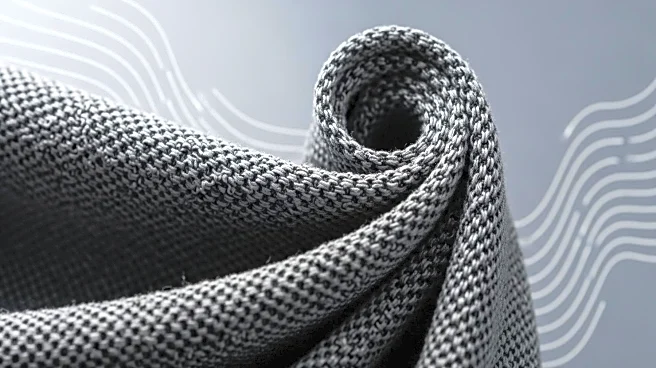What is the story about?
What's Happening?
A research team has developed a new self-healing polyurethane (PU) coating that significantly enhances the durability and flexibility of fabrics such as cotton and leather. This innovative coating incorporates dynamic Schiff base bonds, allowing it to repair scratches within twenty minutes under UV light. The system is based on a reaction between cinnamaldehyde and 3-aminopropyltriethoxysilane (APTES), forming aromatic Schiff base linkages within the PU matrix. The coating not only improves mechanical strength and flexibility but also maintains an aromatic fragrance. When applied to fabrics, the coating increases scratch resistance and tensile performance, achieving up to 80% healing efficiency.
Why It's Important?
The development of this self-healing polyurethane coating represents a significant advancement in textile technology, offering potential benefits for industries reliant on durable and flexible materials. The ability to rapidly repair surface damage can extend the lifespan of fabrics, reducing waste and maintenance costs. This innovation could be particularly valuable in sectors such as fashion, automotive, and furniture, where fabric durability is crucial. Additionally, the sustained fragrance release adds sensory value, potentially enhancing consumer appeal. The coating's environmentally friendly formulation aligns with growing industry trends towards sustainable and eco-friendly materials.
Beyond the Headlines
The introduction of self-healing coatings could lead to broader applications beyond textiles, potentially influencing the development of protective coatings in other industries. The technology's ability to repair damage and maintain structural integrity could be applied to various surfaces, including plastics and metals. Furthermore, the use of renewable and bio-based materials in the coating's formulation reflects a shift towards more sustainable manufacturing practices, which could drive further innovation in eco-friendly materials.
AI Generated Content
Do you find this article useful?
















